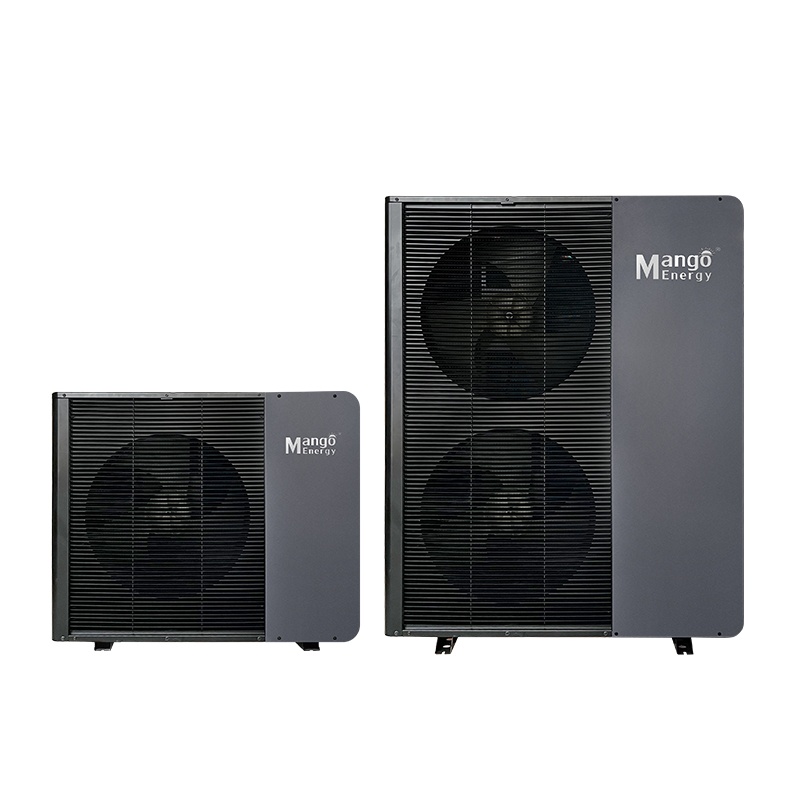
When temperatures drop below freezing, homeowners and commercial property owners alike often question the performance and reliability of air source heat pumps. Traditional systems have struggled in harsh environments, especially where winter lasts months and snow is the norm. But with the rise of DC inverter heat pump systems, things have changed—dramatically.
This article explores whether a DC inverter air source heat pump, such as those from Mango Energy, can perform efficiently and reliably in cold climates.
Understanding DC Inverter Technology in Heat Pumps
Before diving into performance in extreme weather, let’s briefly look at how DC inverter technology works. A DC inverter air source heat pump uses variable-speed compressors instead of fixed-speed ones. This allows the system to adjust output based on real-time heating demand. Rather than switching on and off, the compressor ramps up or down smoothly, improving efficiency, reducing wear, and maintaining more consistent indoor temperatures.

Why Traditional Heat Pumps Struggle in Cold Weather
Conventional air source heat pumps rely on extracting thermal energy from outside air—even when that air is near freezing. In very low temperatures (especially below -5°C), the system must work harder to absorb heat, leading to reduced efficiency and performance.
Common issues include:
Longer defrost cycles
Heat loss due to low refrigerant pressure
Higher energy consumption
Inconsistent indoor heating
How DC Inverter Heat Pumps Overcome Cold Climate Challenges
1. Variable-Speed Compression = Consistent Heating
In cold conditions, a fixed-speed heat pump operates either at full capacity or not at all. A DC inverter heat pump system, on the other hand, adjusts output dynamically. This allows the unit to run continuously at lower speeds, maintaining efficiency and keeping your space warm—even when temperatures dip below freezing. Mango Energy’s DC inverter air source heat pumps are designed specifically for this purpose, equipped with intelligent defrosting technology and low-temperature optimization.
2. Improved Defrosting Mechanisms
One of the main problems in cold climates is frost buildup on the outdoor unit. DC inverter systems use smart sensors to detect frost accumulation and activate defrost cycles only when needed—reducing downtime and improving efficiency. Mango Energy has optimized this process to ensure faster, more energy-saving defrost cycles without compromising the unit’s performance.
3. Wide Operating Temperature Range
Modern energy-saving DC inverter heat pumps can operate efficiently at temperatures as low as -25°C. With advanced refrigerants and thermal management systems, Mango Energy’s heat pumps maintain stable heating output even in regions with long, icy winters.
4. High COP (Coefficient of Performance) in Winter
Thanks to inverter technology and advanced components, DC inverter air source heat pumps can achieve high COPs even in cold environments. This means more heat output per unit of electricity consumed—a key metric in energy efficiency. Mango Energy’s systems maintain COP values above 2.5 at -15°C, delivering reliable warmth without massive spikes in energy bills.
Real-World Applications: Where Are These Systems Used?
Mango Energy’s DC inverter heat pump systems are currently used in:
Northern Europe (Germany, Sweden, Poland)
Canada and northern U.S. states
High-altitude mountain regions in China
Cold rural areas with unstable grid access
In all these regions, performance feedback has been strong, particularly with regard to consistent heating, low maintenance, and energy savings.

Are DC Inverter Heat Pumps Worth It for Cold Climates?
Absolutely—if you choose the right system. Here’s why:
✅ Better cold-weather adaptability
✅ More efficient defrosting
✅ Lower energy consumption
✅ Longer system lifespan
✅ Stable heating with minimal fluctuations
Mango Energy offers a full line of energy-saving DC inverter heat pumps, tested in harsh winter environments and engineered for reliability, quiet operation, and high efficiency.
So, can DC inverter air source heat pumps perform well in cold climates? Yes—they not only perform well but often outperform traditional systems in terms of stability, efficiency, and comfort. If you live in a cold region and are looking for a reliable, low-carbon heating solution, consider investing in a Mango Energy heat pump. With smart inverter control and optimized low-temperature performance, their systems offer peace of mind and year-round energy savings.



